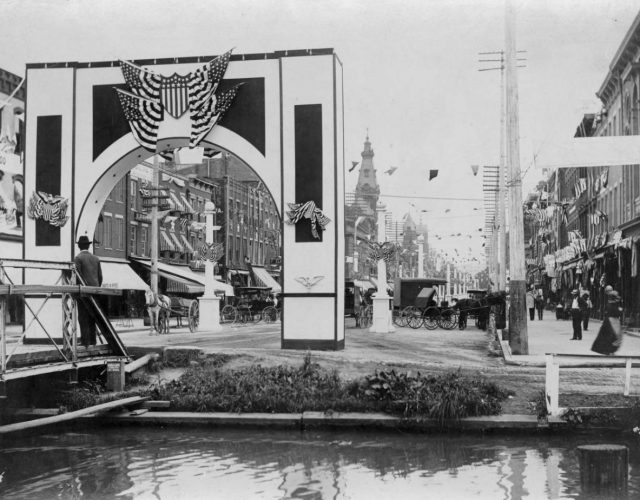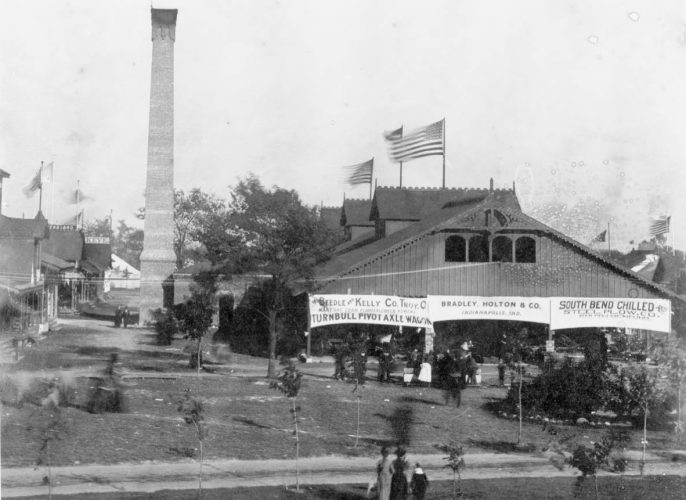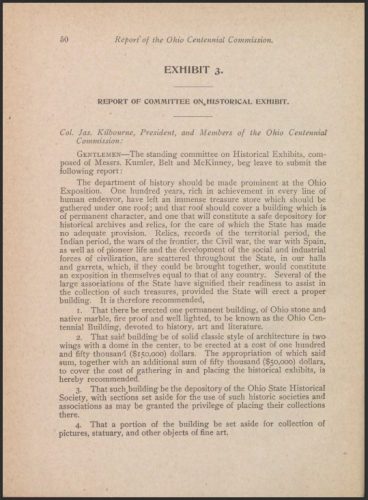The Ohio Centennial Exposition

Happy Statehood Day! Each year, Ohioans celebrate the date of the Ohio General Assembly’s first meeting on March 1, 1803. (Ohio actually became a state on February 19, 1803, when President Thomas Jefferson signed enabling legislation.) Over the years, large events have been held to celebrate major milestones, such as the 1953 Sesquicentennial and the 2003 Bicentennial. Today’s blog post features one celebration you might not have heard of—the 1903 Ohio Centennial Exposition.

As the nineteenth century drew to a close, Ohio lawmakers began to consider options for celebrating the state’s founding. At the time, Ohio had the third largest number of farms in the nation, the fourth largest population, and the fifth largest industrial output. In 1895, a short editorial in The Toledo Blade suggested that Toledo host a centennial exposition.
In the late 1800s and early 1900s, expositions were big business. Cities competed to host them in order to showcase the city’s best features and fuel economic growth. The 1893 Columbian Exposition (marking the 400th anniversary of Columbus’s arrival in the New World) not only helped shape Chicago’s waterfront, but also shaped both the city’s and the country’s self-image. The 1915 Panama-Pacific International Exposition not only celebrated the completion of the Panama Canal, but also showed the world a prosperous San Francisco that had recovered from the devastating 1906 earthquake.

At the turn of the twentieth century, Toledo had a booming population, a deep port, and numerous rail lines. All it needed was publicity. City leaders, businesses, and residents campaigned extensively to host the centennial celebration. In 1898, the General Assembly named Toledo the official centennial city (Columbus and Cleveland tied for second) and authorized the creation of a centennial commission, with one member from each congressional district, to oversee plans for the exposition. Neighboring states accepted invitations to exhibit—including Michigan, which lost Toledo and surrounding land to Ohio at the end of the Toledo War. In addition, a group of Toledo businessmen formed the Ohio Centennial Co. to raise funds. The Ohio General Assembly and the U.S. Congress each allocated $500,000 to support the event, contingent on the Centennial Co. raising an equal amount. By early 1900, the company announced it had met its goal.
And then Toledo city leaders made a critical misstep. On behalf of the city, Ohio representative and Toledo resident Charles Griffin demanded that the state increase its contribution to $1 million. Although the General Assembly was initially willing to approve $750,000, Griffin and city leaders played hardball, insisting on $1 million or nothing. Ohio’s new governor, George Nash, was a political rival of Griffin’s and convinced lawmakers to offer only the original $500,000. When city leaders again refused, the legislative session ended without any appropriations for the exposition, thereby terminating the project. It was later revealed that the Ohio Centennial Co. had fallen significantly short of its fundraising goal. When the General Assembly met again in 1902, it allocated $10,000 for a centennial ceremony to be held in Chillicothe. Instead of a four-month celebration of Ohio’s accomplishments, the centennial was quietly marked with two days of speeches and music.
Thank you to Stephanie Michaels, Research and Catalog Services Librarian at the State Library of Ohio, for this week’s post!



Leave a Reply
You must be logged in to post a comment.